Table of Contents[Hide][Show]
- Nutrivore Score for Wild Coho Salmon – 724
- Wild Coho Salmon Nutrition Facts
- Coho Salmon Nutrition Varies With Cooking and Source
- Salmon Nutrition Varies With Type
Health Benefits of Wild Coho Salmon Nutrients+−
- Wild Coho Salmon Provides 499% DV EPA+DHA
- Wild Coho Salmon Provides 200% DV Vitamin B12 (Cobalamin)
- Wild Coho Salmon Provides 76% DV Selenium
- Wild Coho Salmon Provides 52% DV Vitamin B3 (Niacin)
- Wild Coho Salmon Provides 52% DV Vitamin D
- Wild Coho Salmon Provides 24.9 g of Protein
- Wild Coho Salmon Provides 39% DV Vitamin B7 (Biotin)
- Wild Coho Salmon Provides 37% DV Vitamin B6 (Pyridoxine)
- Wild Coho Salmon Provides 32% DV Iodine
- Wild Coho Salmon Provides 2415.0 μg of Carotenoids
- Wild Coho Salmon Provides 24% DV Phosphorus
- Wild Coho Salmon Provides 23% DV Choline
- How Much Wild Coho Salmon Should We Eat Per Day?

Arguably one of the most well-known and popular fish on the market, salmon are recognized for their orangey-pink flesh (thanks to carotenoids obtained from krill) and their unique ability to travel upstream. This is a fish with versatility – working well in fancy, gourmet meals but also providing an affordable source of nutritious seafood when it comes to canned options. You could say this fish is the “reel” deal!
Salmon are a type of oily, cold-water fish that are closely related to trout and char, which are all members of the same family of fish (Salmonidae). The term salmon does not actually refer to one specific fish but to several species within the genera Salmo and Oncorhynchus. These fish are native to tributaries of the North Atlantic and Pacific Oceans and have been around in some form for 40 million years!
When it’s time to spawn, some salmon travel hundreds of miles upstream against strong currents to return to the very spot where they themselves hatched!
Salmon are famous for being ‘anadromous’ which means they can live in both fresh and saltwater – a feat possible by only 1% of fish species! They spend the majority of their lives in saltwater, but they hatch in fresh water and return there to reproduce. In order to do this, salmon undergo amazing physiological changes allowing them to adapt and survive in the salt waters of the sea. When it’s time to spawn, some travel hundreds of miles upstream against strong currents to return to the very spot where they themselves hatched – an exhausting journey and one that is spectacular to witness if you ever get the chance. (The word salmon is thought to come from Latin, meaning “to leap,” and leap they do!). Once they have spawned, salmon die shortly afterwards completing their lifecycle.
There have been regulations to protect salmon stocks dating back to at least 1030 AD, with notable declines in salmon populations observed in the 1200s.
Salmon are considered ‘keystone species’ – not only critical to the aquatic ecosystem but also forming an important dietary component of many land animals, in addition to feeding the forest (animals, especially bears, discard salmon remains which provide nutrients critical for the forest ecosystem). Salmon have also provided an incredibly important food source for coastal communities throughout human history. Along most of the European coast and as far down as Spain, salmon has been fished since Paleolithic times. Salmon also featured prominently in the diet of Indigenous peoples of North America, forming an important part of their culture. Amazingly, there have been regulations to protect salmon stocks dating back to at least 1030 AD, with notable declines in salmon populations observed in the 1200s. Unfortunately, massive depletions in salmon populations have continued and they are still on the decline – today’s population represents only a small percentage of historical levels! This is why salmon are now fished from the wild and farmed. While the majority of Pacific salmon are wild-caught, Atlantic salmon are for the most part farmed. World-wide the commercial salmon industry exceeds one billion pounds every year, most of that coming from farmed salmon. Well-known commercial species include chinook (also known as king), chum, coho, pink, sockeye and Atlantic salmon.
The majority of Pacific salmon are wild-caught, while Atlantic salmon are for the most part farmed.
Coho salmon (Oncorhynchus kisutch) are sometimes referred to as “silvers” or “silver salmon” because of their silvery skin, which turns red when the fish swim upstream to breed. They are one of several species of Pacific salmon and are found throughout coastal waters on both sides of the North Pacific Ocean (Alaska and British Columbia down to California & Eastern Russia to Japan). They are medium-sized salmon, ranging in weight from 8 to 12 pounds (3.6 to 5.4 kg). Because they have a varied diet, consisting of small fish and squid, in addition to krill, their color is not as intense as some other species. Overall, coho salmon are less expensive than other types of salmon and most importantly, they have a milder taste which appeals to a wider range of consumers.
Learn What Foods to *ADD* to Your Diet
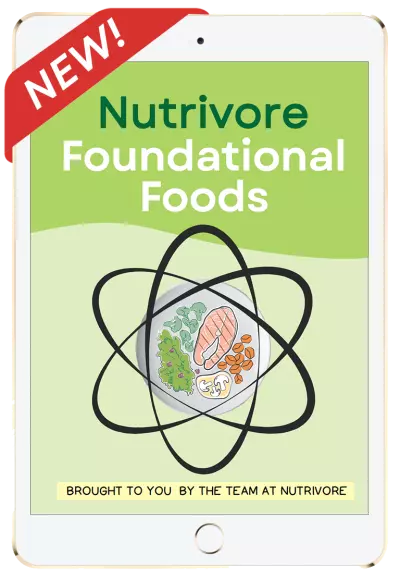
Nutrivore Foundational Foods
Learn what makes the 12 Nutrivore foundational food families nutritionally unique, their health benefits, which options are the most nutrient dense, how much of them to eat, plus various fun facts, practical pointers, and busting of common myths.
This very helpful resource will introduce you to new foods and expand your nutrition knowledge, making food choices easier!
Buy now for instant digital access.
Nutrivore Score for Wild Coho Salmon – 724
Wild coho salmon has a Nutrivore Score of 724, making it a high nutrient-dense food! Plus, it is a low-carb food; wild coho salmon has 0 grams of net carbs per 4-ounce serving.
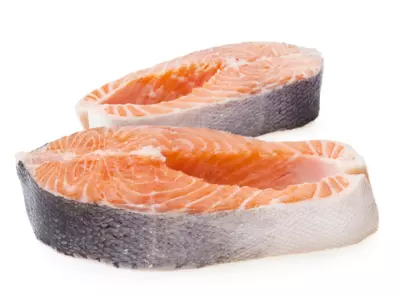
Per serving, wild coho salmon is a best source (>50% daily value) of EPA+DHA, protein, selenium, vitamin B3 (niacin), vitamin B12 (cobalamin), and vitamin D; an excellent source (20-50% daily value) of carotenoids, choline, iodine, phosphorus, vitamin B6 (pyridoxine), and vitamin B7 (biotin); and a good source (10-20% daily value) of alpha-linolenic acid (ALA), coQ10, monounsaturated fatty acids (MUFA), potassium, taurine, vitamin B1 (thiamin), vitamin B2 (riboflavin), and vitamin B5 (pantothenic acid).
Ditch Diets. Embrace Nutrients. Start with this FREE Guide.
Sign up for the free Nutrivore Newsletter, your weekly, science-backed guide to improving health through nutrient-rich foods — without dieting harder —and get the Beginner’s Guide to Nutrivore delivered straight to your inbox!
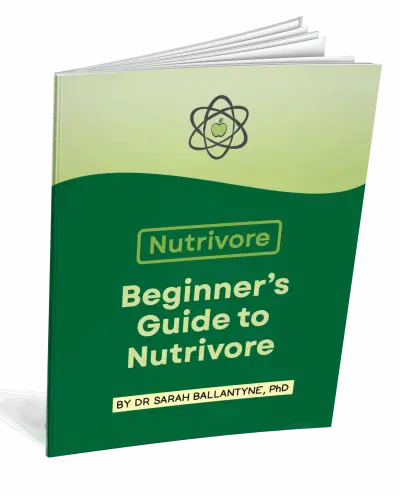
Wild Coho Salmon Nutrition Facts
One serving of wild coho salmon is standardized to 115 grams (4 ounces). When you cook coho salmon, it reduces in volume by approximately 20%: 100 grams raw wild coho salmon is equivalent to 79 grams cooked wild coho salmon.
Wild Coho Salmon Nutrition Facts Per Serving
| Coho salmon, wild, raw | Nutrivore Score: 724 | Nutrient Density: High |
|---|---|---|
| Serving Size: 4 ounces (115 grams) | Protein: 24.9 grams | Net Carbohydrates: 0.0 grams |
| Calories: 168 | Total Fat: 6.8 grams | Dietary Fiber: 0.0 grams |
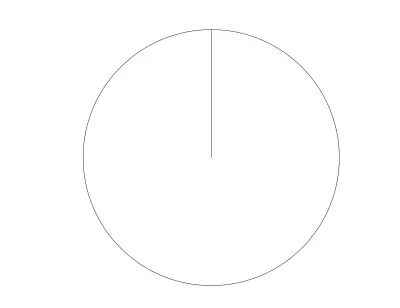
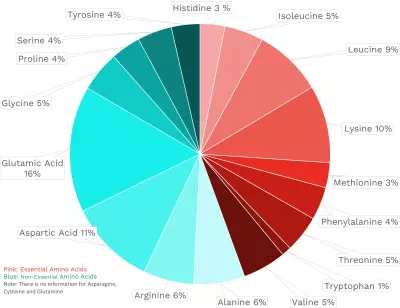
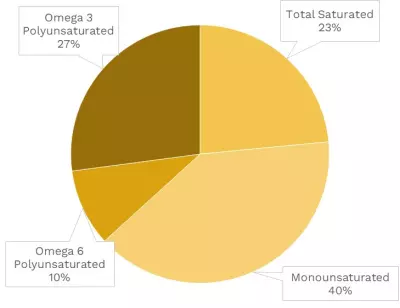
| VITAMINS | ||
|---|---|---|
| Vitamin A | 46.0 μg RAE | 5% DV |
| Vitamin B1 (Thiamin) | 130.0 μg | 11% DV |
| Vitamin B2 (Riboflavin) | 161.0 μg | 12% DV |
| Vitamin B3 (Niacin) | 8.3 mg | 52% DV |
| Vitamin B5 (Pantothenic Acid) | 0.9 mg | 19% DV |
| Vitamin B6 (Pyridoxine) | 631.4 μg | 37% DV |
| Vitamin B7 (Biotin) | 11.7 μg | 39% DV |
| Vitamin B9 (Folate) | 10.4 μg | 3% DV |
| Vitamin B12 (Cobalamin) | 4.8 μg | 200% DV |
| Vitamin C | 1.2 mg | 1% DV |
| Vitamin D (D2 + D3) | 10.4 μg | 52% DV |
| Vitamin E | 0.8 mg | 6% DV |
| Vitamin K | 0.1 μg | 0% DV |
| Choline | 125.8 mg | 23% DV |
| Myo-Inositol | ~ | ~ |
| CoQ10 | 0.9 mg | ~ |
| FUNCTIONAL FATS | ||
|---|---|---|
| MUFA | 2.5 g | 12% DV |
| ALA | 180.6 mg | 11% DV |
| EPA + DHA | 1247.8 mg | 499% DV |
| CLA | 2.0 mg | ~ |
| Linoleic Acid | 0.2 g | 1% DV |
| MCT’s | 0.0 g | ~ |
| MINERALS | ||
|---|---|---|
| Calcium | 41.4 mg | 3% DV |
| Copper | 58.7 μg | 7% DV |
| Iodine | 48.5 μg | 32% DV |
| Iron | 0.6 mg | 4% DV |
| Magnesium | 35.7 mg | 8% DV |
| Manganese | 16.1 μg | 1% DV |
| Phosphorus | 301.3 mg | 24% DV |
| Potassium | 486.5 mg | 10% DV |
| Selenium | 42.0 μg | 76% DV |
| Sodium | 52.9 mg | 2% DV |
| Zinc | 0.5 mg | 4% DV |
| PHYTONUTRIENTS | ||
|---|---|---|
| Carotenoids | 2415.0 μg | ~ |
| Polyphenols | 0.0 mg | ~ |
| Phytosterols | 0.0 mg | ~ |
| Glucosinolates | ~ | ~ |
| Thiosulfinates | ~ | ~ |
| Betalains | ~ | ~ |
| AMINO ACIDS & PEPTIDES | ||
|---|---|---|
| Taurine | 69.0 mg | ~ |
| Ergothioneine | ~ | ~ |
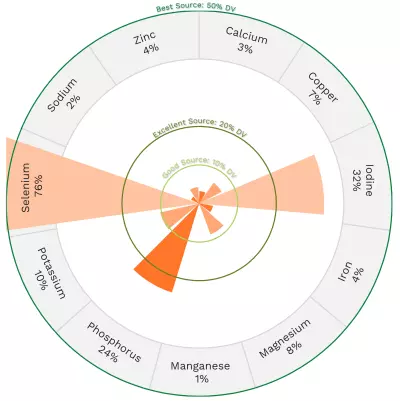
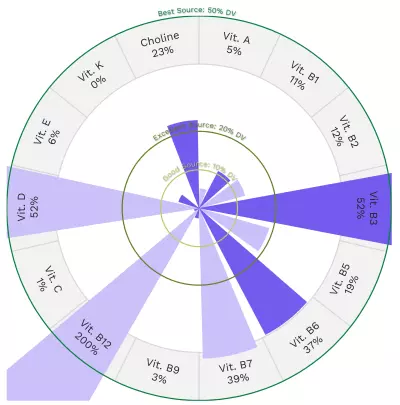


Quality Meat and Seafood
- 100% grass fed and finished beef, pasture-raised pork, pasture-raised chicken and wild-caught seafood
- Raised on regenerative family farms in the USA
- Fast delivery from our farms to your door
- Save 20% off for life, plus $15 off your first box, no coupon required
Coho Salmon Nutrition Varies With Cooking and Source
The Nutrivore Score of coho salmon varies depending on method of preparation and the way in which it was raised (farmed or wild-caught). Typically wild-caught fish have higher levels of nutrients which results in higher Nutrivore Scores, but including any type of fish in our diet, farmed or wild-caught, will result in plenty of health benefits!
| NUTRIVORE SCORE | |
|---|---|
| Coho salmon, Alaskan, raw | 1091 |
| Coho salmon, farmed, cooked, dry heat | 622 |
| Coho salmon, farmed, raw | 636 |
| Coho salmon, wild, cooked, dry heat | 787 |
| Coho salmon, wild, cooked, moist heat | 690 |
| Coho salmon, wild, raw | 724 |
Salmon Nutrition Varies With Type
There are many types of salmon, each with their own unique taste and nutrient profile, which means their Nutrivore Scores also vary. To maximize all the benefits salmon has to offer, try incorporating different types into your diet. While some salmon are readily available fresh or frozen, other varieties may be easier to find canned, which gives the added benefit of including bones (a rich source of calcium).
| NUTRIVORE SCORE | |
|---|---|
| Atlantic salmon, farmed, raw | 677 |
| Atlantic salmon, wild, raw | 868 |
| Chinook salmon, Alaskan, raw | 691 |
| Chinook salmon, raw | 775 |
| Chum salmon, Alaskan, raw | 855 |
| Chum salmon, raw | 646 |
| Coho salmon, Alaskan, raw | 1091 |
| Coho salmon, farmed, raw | 636 |
| Coho salmon, wild, raw | 724 |
| Pink salmon, raw | 625 |
| Sockeye salmon, Alaskan, raw | 786 |
| Sockeye salmon, raw | 750 |
Impressed by all the bene-FISH-ial nutrition in salmon? Maybe your friends will be too!
Health Benefits of Wild Coho Salmon Nutrients
Let’s take a closer look at all of the best and excellent source of nutrients found in a 4-ounce serving of wild coho salmon and see how they benefit our health.
Wild Coho Salmon Provides 499% DV EPA+DHA
Wild coho salmon is a phenomenal source of EPA+DHA, providing an astounding 499% of the daily value per 4-ounce serving!
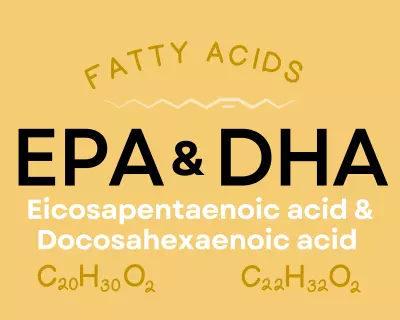
Eicosapentaenoic acid (EPA) and docosahexaenoic acid (DHA) are long-chain omega-3 fats that play important roles in neurological health, immune function, eye health and vision, inflammation, pain signaling, gut health, fetal development, and some aspects of cardiovascular health (like triglyceride levels and blood clotting). They exert many of their effects by helping form chemical messengers called prostaglandins, thromboxanes, and leukotrienes. EPA and DHA also serve as a structural component of the cell membrane, influencing important properties such as membrane fluidity and permeability. Small amounts of them can be synthesized from a shorter-chain omega-3 fat, alpha-linolenic acid (ALA). Learn more about EPA and DHA here.
Wild Coho Salmon Provides 200% DV Vitamin B12 (Cobalamin)
Wild coho salmon is a best source of vitamin B12 (cobalamin), providing a whopping 200% of the daily value per 4-ounce serving!

Vitamin B12 (cobalamin) is a water-soluble vitamin that serves as a cofactor for enzymes involved in energy metabolism, red blood cell production, DNA synthesis, neurotransmitter production, nervous system health, and folate metabolism. As a result of these roles, vitamin B12 is vital for maintaining brain and nervous system health, and may have a protective effect against dementia, Alzheimer’s disease, and depression. There’s also some evidence vitamin B12 may be cancer-protective, possibly through supporting folate metabolism (which then assists in repairing DNA damage). Learn more about vitamin B12 here.
Wild Coho Salmon Provides 76% DV Selenium
Wild coho salmon is also a best source of selenium, providing 76% of the daily value per 4-ounce serving!
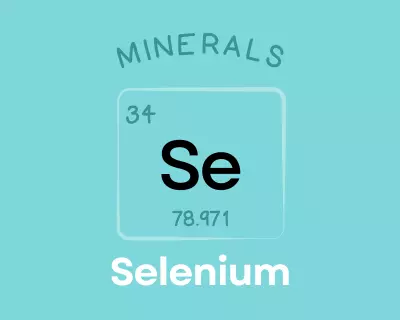
Selenium is a trace mineral needed by all mammals to sustain life. It serves as a component of the non-proteinogenic amino acids selenocysteine and selenomethionine, and also helps form over two dozen selenoproteins involved in reproduction, thyroid hormone metabolism, antioxidant defense, DNA synthesis, and immunity. Observational research suggests selenium could play a protective role against cancer, heart disease, asthma, and inflammatory bowel disease, although human trials have generally been lacking or contradictory. There’s also evidence that selenium can play a preventative role in asthma and inflammatory bowel disease, while also reducing mortality in patients with sepsis. Learn more about selenium here.
Wild Coho Salmon Provides 52% DV Vitamin B3 (Niacin)
In addition, wild coho salmon is a best source of vitamin B3 (niacin), providing 52% of the daily value per 4-ounce serving!
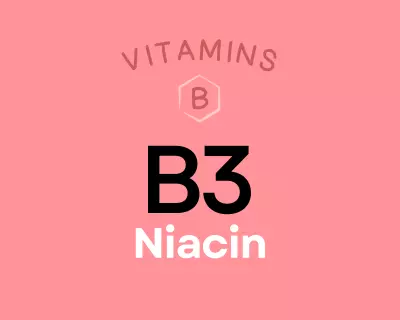
Niacin is a water-soluble B complex vitamin (vitamin B3) that’s needed to produce two very important coenzymes: nicotinamide adenine dinucleotide (NAD) and nicotinamide adenine dinucleotide phosphate (NADP). NAD and NADP are needed for over 400 enzymes involved in DNA repair, fatty acid synthesis, antioxidant systems, detoxification, and hormone synthesis, as well as the breakdown of fat, carbohydrate, protein, and alcohol. Niacin has therapeutic potential for cardiovascular disease and hyperlipidemia, and may also be protective against cancer and type 1 diabetes. Some research suggests it could benefit health outcomes for patients with HIV or schizophrenia as well. Learn more about niacin here.
Wild Coho Salmon Provides 52% DV Vitamin D
Wild coho salmon is one of the few natural food sources of vitamin D, providing 52% of the daily value per 4-ounce serving!
Salmon (and other fatty fish) are amongst the few foods that naturally contain vitamin D.
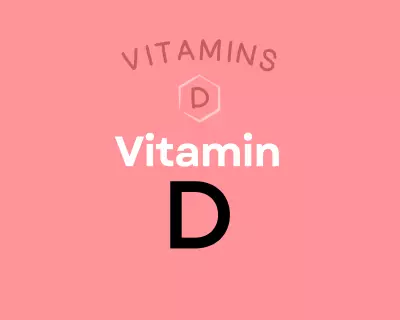
Rather than being a “true” vitamin, vitamin D is a group of fat-soluble steroid hormones that can be either obtained from the diet or synthesized from sun exposure. It plays a major role in cellular differentiation, immune function, endocrine health, cardiovascular health, and even the intestinal absorption of several other nutrients (namely calcium, magnesium, and phosphorus). As a result of these diverse functions, getting enough vitamin D is important for protecting against chronic disease (including diabetes, cancer, and degenerative neurological conditions), maintaining good gut health, and keeping a healthy immune system (including protecting against both infectious disease and autoimmunity). Learn more about vitamin D here.
Wild Coho Salmon Provides 24.9 g of Protein
Wild coho salmon is also a best source of protein, containing 24.9 g of protein per 4-ounce serving!
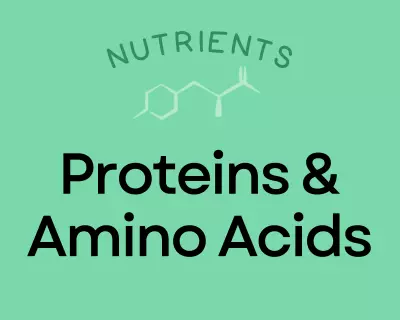
Proteins are the molecules that actually perform most of the various functions of life. In addition to being major structural components of cells and tissues, they have incredibly diverse roles from driving chemical reactions (e.g., enzymes) to signaling (e.g., some types of hormones) to transporting and storing nutrients. Dietary protein is necessary to supply the amino acid building blocks for all of the proteins in our bodies. The recommended daily allowance of protein is 0.36 grams per pound body weight (0.8 grams per kilogram of body weight). That amounts to 56 grams for a 150-pound person. However, it’s important to emphasize that this number is considered a minimum daily allotment, and there is no established upper limit. In fact, many studies have evaluated diets containing three to four times more protein than this minimum and proven benefits to weight management, body composition, hormone regulation, and cardiovascular health. These studies suggest that an optimal protein intake for most people is probably in the range of 1.2 to 1.8 grams per kilogram bodyweight (82 to 122 grams for that same 150-pound person), and that people who are very active may see the best results at even higher intake. Learn more about protein and amino acids here.
Wild Coho Salmon Provides 39% DV Vitamin B7 (Biotin)
Wild coho salmon is an excellent source of vitamin B7 (biotin), providing 39% of the daily value per 4-ounce serving!
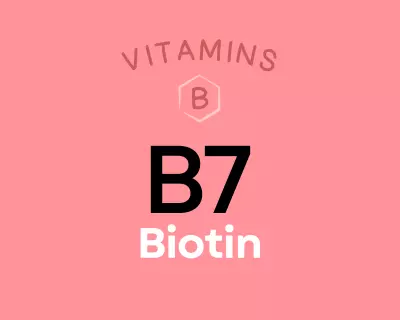
Biotin is a water-soluble B vitamin, also known as vitamin B7. Like other B vitamins, it plays an important role in energy metabolism (serving as a coenzyme for five carboxylase enzymes), neurotransmitter production, cellular function, and the function of various organs. Getting enough biotin can help support healthy nail and hair growth. It’s also particularly important during pregnancy, with low intakes increasing the risk of premature delivery and birth defects. There’s even some evidence biotin can benefit diabetics and reduce functional disabilities in people with multiple sclerosis. Learn more about biotin here.
Wild Coho Salmon Provides 37% DV Vitamin B6 (Pyridoxine)
Wild coho salmon is a also an excellent source of vitamin B6 (pyridoxine), providing 37% of the daily value per 4-ounce serving!
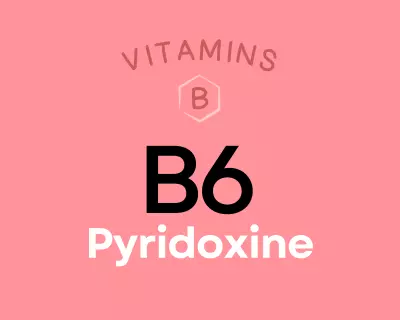
Vitamin B6 (pyridoxine) is a group of six water-soluble compounds with a similar chemical structure, all of which can be converted into their active form of pyridoxal 5’-phospate (PLP). Over 100 different enzymes require vitamin B6 in order to carry out their various functions in protein metabolism, fatty acid metabolism, neurotransmitter production, gluconeogenesis, hemoglobin synthesis, the release of glucose from glycogen, and energy metabolism (particularly the production of ATP in the Krebs cycle). Research suggests vitamin B6 may help protect against cardiovascular disease and certain cancers, could reduce the risk of depression among the elderly, and even reduce symptoms of morning sickness and PMS. Learn more about vitamin B6 here.
Wild Coho Salmon Provides 32% DV Iodine
Wild coho salmon is an excellent source of iodine, providing 32% of the daily value per 4-ounce serving!
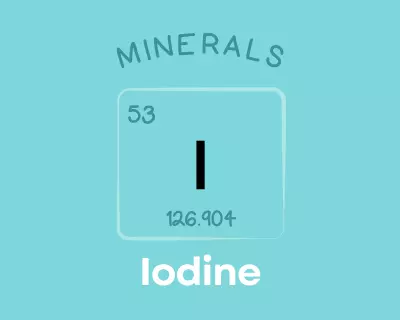
Iodine is a trace mineral that serves as a structural component of thyroid hormones, giving it a major role in thyroid health and function. As a result, it’s involved in regulating metabolism, reproductive function, fatty acid release, carbohydrate absorption, growth, and development. Consuming adequate amounts is particularly important during pregnancy (for preventing complications like preeclampsia, preterm delivery, miscarriage, and stillbirth) and during childhood (where it supports central nervous system development). Untreated iodine deficiency can lead to goiter and hypothyroidism. Learn more about iodine here.
Wild Coho Salmon Provides 2415.0 μg of Carotenoids
Wild coho salmon is also an excellent source of carotenoids, containing 2415.0 μg of carotenoids per 4-ounce serving!
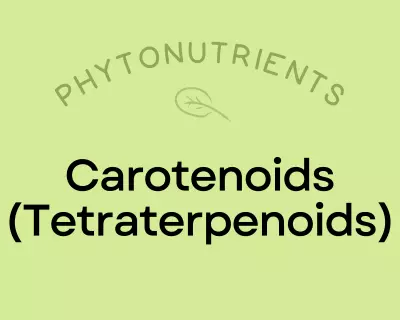
Carotenoids are a diverse group of phytonutrients that are responsible for giving fruits and vegetables vibrant red, orange, and yellow pigmentation. They were one of the earliest phytonutrients ever investigated by scientists (with research dating back to the 1800s!). Across studies, eating foods high in carotenoids appears to reduce the risk of head and neck cancers, supports vision health (particularly age-related eye diseases), may protect against metabolic syndrome and diabetes, and can reduce inflammation. Carotenoids have strong antioxidant properties, and help facilitate communication between cells by promoting the synthesis of connexin proteins, which create gap junctions in cell membranes that allow small molecules to be exchanged (which is part of how cells “talk” to each other!). Consuming carotenoids with fat significantly increases their absorption. Learn more about carotenoids here.
Wild Coho Salmon Provides 24% DV Phosphorus
Wild coho salmon is an excellent source of phosphorus, providing 24% of the daily value per 4-ounce serving!
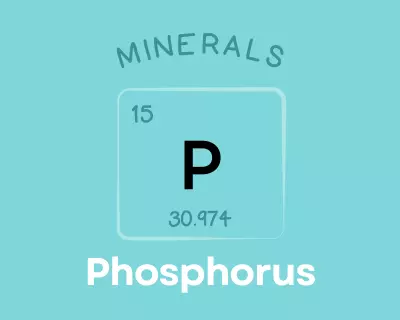
Phosphorus is an essential mineral that makes up about 1% of the total weight of the human body. Along with serving an important structural role for building nucleic acids and cell membranes, phosphorus is involved in numerous biological processes—including acid-base regulation, energy production, cell signaling, and bone mineralization. Excess phosphorus has been linked to a higher risk of cardiovascular disease, fractures, and osteoporosis, especially in the context of a low-calcium diet. Learn more about phosphorus here.
Wild Coho Salmon Provides 23% DV Choline
In addition, wild coho salmon is also an excellent source of choline, providing 23% of the daily value per 4-ounce serving!
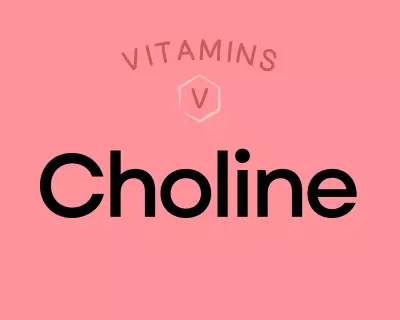
Choline is often grouped together with B-complex vitamins, and sometimes referred to as vitamin B4. It plays an essential role in building cell membranes. Choline also serves as the backbone for a neurotransmitter called acetylcholine, which is involved in heart health, gut motility (the movement of contents through the digestive tract controlled by the coordinated contraction and relaxation of specialized gut muscle tissue), and muscle movement. Adequate intake during pregnancy can help reduce risk of neural tube defects.
Learn What Foods Are the Best Sources of Every Nutrient
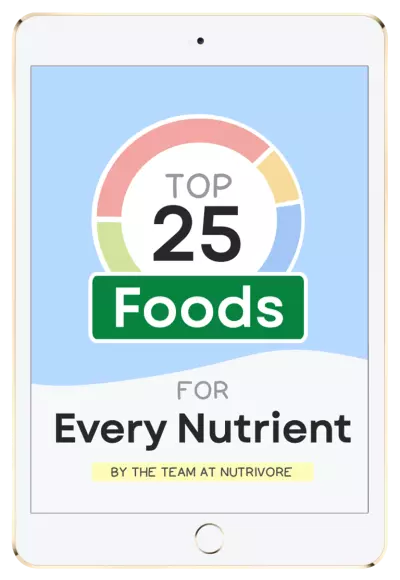
The Top 25 Foods for Every Nutrient
The Top 25 Foods for Every Nutrient e-book is a well-organized, easy-to-use, grocery store-friendly guide to help you choose foods that fit your needs of 43 important nutrients while creating a balanced nutrient-dense diet.
Get two “Top 25” food lists for each nutrient, plus you’ll find RDA charts for everyone, informative visuals, fun facts, serving sizes and the 58 foods that are Nutrient Super Stars!
Buy now for instant digital access.
How Much Wild Coho Salmon Should We Eat Per Day?
Fish are nutrient-dense sources of highly-digestible complete protein and outstanding sources of important nutrients in which we are commonly deficient. Let’s just say this seafood is “off the hook!” (Pun intended.)
Fish and shellfish are not only nutrient-dense sources of highly-digestible gut-friendly complete protein and the best food sources of the very important long-chain omega-3 fatty acids, DHA and EPA, but they’re outstanding sources of important nutrients in which we are commonly deficient. Eating seafood reduces risk of cardiovascular disease, type 2 diabetes, obesity and some forms of cancer.
Fish is a great source of vitamins B1, B2, B3, B6, B9, B12 and E, zinc, phosphorus, magnesium, iron, copper, potassium and selenium, with oily cold-water fish also providing substantial amounts of vitamin A and vitamin D. Fish with bones remaining, such as canned salmon and sardines, are the best dietary sources of calcium in the food supply. And marine fish are an excellent dietary source of iodine.
In fact, every 100 grams per day of seafood decreases all-cause mortality by 7%. And, every 20 grams per day of fish decreases cardiovascular disease mortality by 4%. Aim to eat three or more servings of seafood weekly (and up to every meal!). Learn more about seafood here.
Consumption of salmon is associated with a lower risk of heart attack, hypertension, obesity, and diabetes! It’s always best to mix up the foods you eat day to day (aiming for a wide variety of different fish and shellfish throughout the week), and salmon definitely has a place at the table.
Easily track your servings of Nutrivore Foundational Foods!

The Nutrivore Weekly Serving Matrix
The Nutrivore Weekly Serving Matrix digital resource is an easy-to-use and flexible weekly checklist designed to help you maximize nutrient-density and meet serving suggestions of Nutrivore foundational foods, all without having to weigh or measure your foods!
Includes a 22-page instructional guide and downloadable interactive guides.
Buy now for instant digital access.
Citations
Expand to see all scientific references for this article.
Chin SF, Liu W, Storkson J, Ha Y, Pariza M. Dietary sources of conjugated dienoic isomers of linoleic acid, a newly recognized class of anticarcinogens. Journal of Food Composition and Analysis. 1992 Sept(5):185-197. DOI:10.1016/0889-1575(92)90037-K
EFSA Panel on Additives and Products or Substances used in Animal Feed, 2005. Opinion of the Scientific Panel on additives and products or substances used in animal feed (FEEDAP) on the safety of use of colouring agents in animal nutrition – PART I. General Principles and Astaxanthin, EFSA Journal. 2005; 3( 12):291, 40 pp. doi:10.2903/j.efsa.2005.291
Fineli Finnish Food Composition Database: Salmon, whole
Gormley TR, Neumann T, Fagan JD, Brunton NP. Taurine content of raw and processed fish fillets/portions. European Food Research and Technology. 2007. 225(5):837-842. doi: 10.1007/s00217-006-0489-4
Pravst I, Zmitek K, Zmitek J. Coenzyme Q10 contents in foods and fortification strategies. Crit Rev Food Sci Nutr. 2010 Apr;50(4):269-80. doi: 10.1080/10408390902773037. PMID: 20301015.
USDA Food Central Database: Fish, salmon, coho, wild, raw
Watanabe T, Kioka M, Fukushima A, Morimoto M, Sawamura H. Biotin content table of select foods and biotin intake in Japanese. Int J Anal Bio-Sci. 2014. Vol 2(4):109-125.


